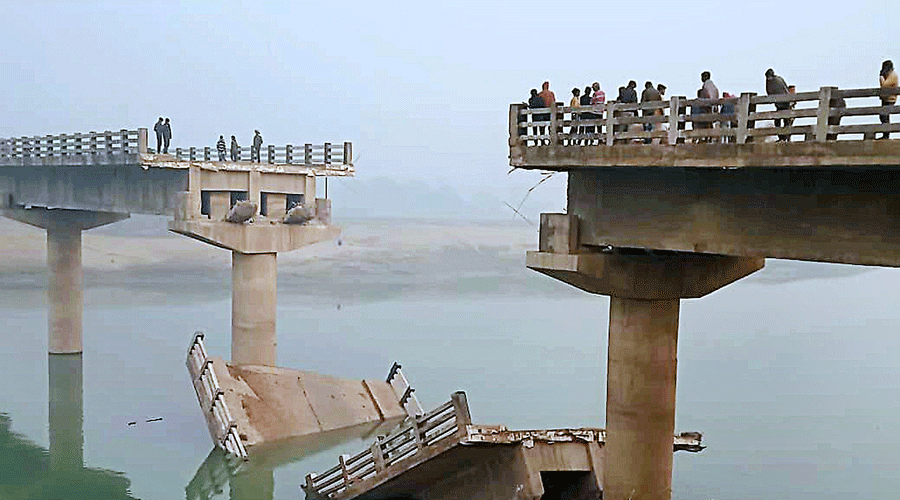Crumbling bridges

Bridges in Bihar are falling like ninepins, and so is people’s trust in public infrastructure. In the past three weeks, Bihar has witnessed the collapse of 13 bridges, with the latest incident unfolding in Mahishi village, Saharsa district, on Wednesday. Thankfully, no lives were lost in the collapse. The saga of bridge collapses, however, is not limited to the past three weeks. Reports suggest that the number of bridge collapses in the last two years stands at 19. Even beyond that, the problem has been a constant in the state’s infrastructural landscape for well over a decade. After Nitish Kumar assumed the position of chief minister in 2005, he successfully sold the idea of development—equated primarily with transportation infrastructure. A total of 6,200 bridges have been constructed under his extensive tenure. The falling bridges now give a perception of crumbling infrastructure—indicating, also, the collapse of metaphorical ‘bridge’ to development.
Facing heated criticism from the opposition, the Bihar government, almost as an emergency response, has rolled out a bridge maintenance policy—an intervention that was waiting in the pipeline for a decade. The new policy, rolled out by the Bihar Rajya Pul Nirman Nigam Limited (BRPNNL), aims to guide engineers in maintaining, constructing, and repairing bridges. Under this policy, departments such as road construction, water resources, and building construction are required to issue “health cards” with detailed records of inspection and maintenance. The policy mandates physical and video inspections of bridges at least twice a year, with one inspection required before the monsoon season. If any desilting exercises are planned, the bridges must be inspected under the supervision of experts. Departments are also to be sanctioned funds specifically for bridge maintenance. For larger bridges, the government may hire consultants to assist with maintenance.
The policy is a delayed response. Although it has some seemingly effective provisions, it is not adequate in itself to address the current credibility crisis faced by the Bihar government. The government, it may be recalled, has suspended 15 engineers. This step, too, merely serves the optics because the issue of frequent bridge collapses is linked with deeper structural inadequacies and even corruption. For quite a long time, most of the bridge collapses in Bihar have been attributed to the changing courses of rivers. As a matter of fact, Bihar is criss-crossed by rivers that exhibit a very wide range of diverse characters. The flooding caused by Sone, for instance, is very different from that by Ganges. The Kosi in the Saharsa-Katihar-Madhubani region has its own dreadful flow mechanisms. Still, there is a great deal of predictability about the haphazard courses of these rivers.
Experts have repeatedly pointed out that a robust and comprehensive analysis of rivers’ hydrology is essential to ensure sustainable engineering of bridges. Presently, Bihar uses almost the century-old Lacey method for evaluation, which assumes constant silt grade and charge while measuring velocity, and is primarily meant to evaluate canals. These strategies need to be reworked urgently. Rampant sand mining, which weakens bridge foundations, is yet another factor behind bridge collapses. Despite regulations prohibiting sand mining within 500 meters of bridges, these rules are seldom enforced. Illegal sand mining has emerged as a booming avenue for making big and quick profits in the state. Additionally, hasty project approvals without thorough environmental assessments have also complicated the problem of bridge collapses. Needless to say, apart from ensuring accountability for recent collapses, Bihar has a long way to go in terms of instituting sustainable solutions.



